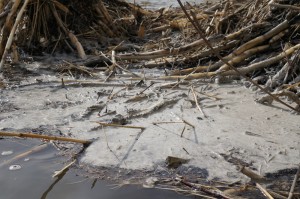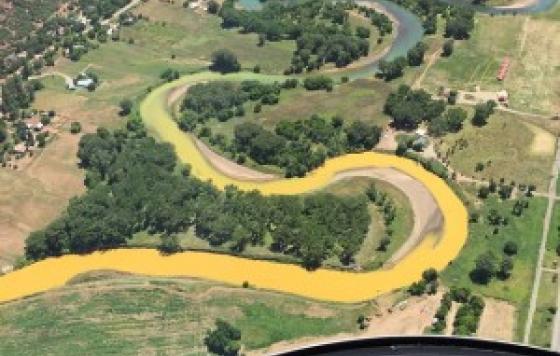
By Lynn Thorp, National Campaign Director (Follow Lynn on Twitter - @LTCWA)
Update - February 18, 2014: Click here to tell EPA to Put Drinking Water First and Protect Communities from Coal Ash!
Actually, it’s a complicated question. But one thing is certain. Coal plants and other facilities should not be contaminating our rivers, lakes, streams and drinking water sources with arsenic or any other toxic metals and chemicals. That is why it has been puzzling to see the reaction to the coal ash spill into the Dan River from a recent Duke Energy coal ash disposal site in Eden NC. This enormous spill has been chronicled by my colleague Jennifer Peters here and here and has made national news. Local water treatment plants have said that the spill does not pose problems for them because they are able to remove the contaminants in the ash. This is a good thing, though it demonstrates that once again our nation’s Public Water Systems have to clean up toxic waste that should have been prevented upstream.
Just because water treatment is able to handle this irresponsible situation does not make it “okay.” What the water utility is ensuring is that the water they deliver meets federal Safe Drinking Water Act standards. These standards, also known as Maximum Contaminant Levels (MCLs), include a margin of safety but also include a consideration of cost and feasibility. There is another number that matters, especially for the metals and toxic chemicals common in coal ash waste. The Maximum Contaminant Level Goal (MCLG) is the amount of a contaminant below which there is no health effect and which would be the ideal standard if cost and feasibility were not considered. For arsenic, for example, the MCLG is zero. Any additional arsenic in our drinking water, even if it’s still at a level below the MCL, is an additional health burden on an individual. Remember that we are exposed to contaminants like arsenic from other sources. Even though our drinking water standards take this into consideration, it is far from ideal to add to that exposure.
Given the recent chemical spill in West Virginia, which has caused epic tap water problems and concern for over a month now, it’s no wonder that all eyes are on drinking water in the wake of the Duke coal ash spill. However, water pollution is not only about drinking water. Remember that the water quality in the Dan River will impact wildlife in and around the water, and will determine if the River is safe for swimming and fishing. Duke’s spill has put an enormous burden on this body of water and it should not have happened.
While not as dramatic, it’s important to remember that our nation’s coal plants place an ongoing threat to our water bodies every day. That’s why we worked so hard to win strict Clean Water Act limits on this pollution earlier this year. We’re still waiting for EPA to set those water pollution limits and to finalize requirements for coal ash disposal. Please join us in reminding President Obama how important it is to control these toxic water discharges.
The referenced media source is missing and needs to be re-embedded.
Coal Ash on the Dan River - courtesy of Waterkeeper AllianceRelated Posts
Stay Informed
Get the latest updates and actions:
Thanks for signing up!
There was a problem processing your signup. Please try again.


